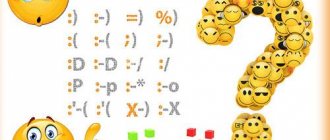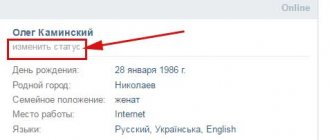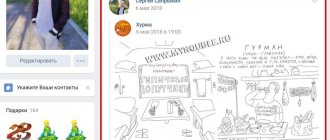Beginner Internet users do not understand many things. Of course, first of all, this includes the famous online slang and manner of communication. And if strange words and expressions can be learned and remembered, the meaning of emoticons in WhatsApp remains unclear to many.
To do this, you should understand what the emoticons in WhatsApp mean, and we will be happy to provide you with their decoding in Russian. This is the most complete list in the Russian-language segment of the Internet, and it will be constantly updated with fresh emoji.
Parentheses in messages - history of use
Many believe that parentheses in correspondence are a universal international tool for expressing emotions in text messages. But this is far from true.
It was Russians and other residents of the republics of the former Union who began using parentheses in messages around the 90s of the 20th century.
It is in the messages of domestic users that the use of parentheses as an expression of some kind of emotion is most common. For foreigners, such methods of communication look, at least, strange. Instead of our dry brackets, foreigners prefer traditional smiles and emojis.
What causes Russians to use parentheses instead of traditional emoticons?
Speed and ease of use.
Instead of typing two or even three characters to indicate a smile (for example, ), just type one parenthesis, which will mean the same thing as the above smiley. In this case, time is saved significantly, especially in a situation where you are using more than one such option.
Emoticons/emoji/brackets
Let's get this straight, emoticons are good. But everything is good in moderation. In the early days of the Internet, emojis were a blessing that was sent down to convey emotions in text. And we took this heavenly gift and turned it into an indicator of vulgarity and inadequacy.
If this is not a friendly correspondence, try to avoid emoticons altogether. Not every interlocutor will be able to interpret them correctly and consider such an expression of emotions appropriate.
Of course, no one has ever died from a couple of emojis in a letter. But a dozen emoticons in a row really destroy not only the entire meaning of the message, but also the good name of its author.
There is no need to put a smiley face on every word that has an emoji. The words themselves are quite informative. Emoticons, like exclamation marks, serve only to enhance the effect. Alternatively, to briefly indicate agreement/disagreement or some kind of emotion when you do not use words.
Smileys are simply an irreplaceable thing. But you shouldn’t replace common sense with them and use only rock paintings. In the 21st century this is somehow not respectable.
If you absolutely want to joke and avoid the risk of being misunderstood, then put a couple of parentheses at the end of the phrase. This will be enough to show the humorous tone of the statement. But a whole battery of them will mean that you, at the very least, are dying of laughter. But you are not the philosopher Chrysippus, who, according to legend, died from this. Don't overdo it, it doesn't suit you.
What do parentheses mean in correspondence?
What is the meaning of parentheses in messages?
Their meaning is approximately the following:
- ) – A slight smile. Often used as a form of politeness, emphasizing the positive attitude of the interlocutor
- )) - Light laughter. Usually means that your interlocutor found something funny in your words, or simply laughs, being in a good mood
- ))) - Loud laughter
- ))))))))) + more parentheses - demonstrates prolonged and loud laughter , a reaction level of “I’m lying on the floor laughing.” May signal your interlocutor's excessive use of parentheses to express his emotions
- ( – Slight sadness
- (( – Intense sadness
- ((( – + more – melancholy , depression etc
A parenthesis at the end of a message usually gives the entire message an appropriate tone. The ")" bracket indicates a positive or cheerful tone of the message, and the "(" bracket indicates a negative, sad or sorrowful tone.
And a few more related emoticons with brackets:
- – Wink
- :'( – Sad expression with tears
- %) – Dizziness, shock
- – Smiley with glasses (black). May mean secrecy, self-confidence, etc.
What does this notification mean in VK?
Sending messages is limited - this is a new notification in VK, which indicates that the user is using a restriction on the number of people who can send him a message. The option can also be considered as a kind of anti-spam protection. If you are not sending advertising, then the most likely reason seems to be a restriction on the part of the recipient. He could change the profile settings, prohibiting messages from both specific individuals and various groups from being sent to him. Don't forget about the Black List, where users regularly send each other during a quarrel.
What are parentheses used for?
Now that we've looked at what parentheses mean in a message, let's also look at what they are used for. Victor Pelevin called emoticons a “visual deodorant.”
The use of positive emoticons (in our case, parentheses) allows you to give your communication a light background, joy and ease, and demonstrates your disposition towards your interlocutor.
Often the use of parentheses is, at a minimum, an “act of politeness” that allows you to avoid too dry a tone, formalism and rigidity in communication.
Please note that the use of parentheses is only justified in informal communication. Parentheses will be superfluous in business correspondence, in jurisprudence, and when writing scientific materials. Avoid using parentheses when communicating with foreigners.
In most cases, they will not understand you, and will consider your use of parentheses, at least, strange.
We also do not recommend overloading your text dialogue with parentheses. When there are too many parentheses, they make the text difficult to understand and can serve as a turn-off for your interlocutor.
Exploring nonverbal communication
Quite a lot of research has been carried out around the world on non-verbal communication during correspondence - how we perceive the interlocutor when looking at the text. Our scientists decided to find out how the length of messages differs between men and women, who uses emoticons and how, as well as reactions to a new type of interaction. Everything here turned out to be quite predictable: the length of messages is longer for women than for men, women use emoticons more often, and men cannot always understand what they mean.
American scientists led by Celia Klin from Binghamton University (as reported by The Washington Post) surveyed 126 respondents who often write on the Internet and found that a period at the end of a message tells them that the response is cold. And the shorter this answer, the more clearly this manifests itself. An exclamation mark, on the contrary, looks like lively participation in the dialogue and involvement of the interlocutors.
But besides dots, there are other ways to convey your emotions in writing. The number of brackets indicates the different feelings of the person writing the message. What are they talking about?
- ) One bracket means acceptance of the interlocutor, pleasure from communicating with him.
- )) Two brackets - that it is funny, the interlocutor smiles.
- ))) Three parentheses or more say: I laugh when I write (and I invite you to laugh). How loud and fervently you can understand by the line of parentheses lined up after the words.
But now everything is changing again: many interesting, speaking emoticons have appeared that color the text much brighter than brackets.
"Thank you"
There are several ways to say thank you. If there is an exclamation mark at the end, it is gratitude with a hint of delight. “Thank you” without a sign at the end is an appreciation for participation or attention. “Thank you” with a period at the end indicates the end of the conversation, a statement of fact.
What does the ellipsis mean in different cases?
An ellipsis is a punctuation mark in a text. Depending on the language, it consists of three dots (Russian, English) or six (Chinese). Also, the ellipsis can be horizontal or vertical.
Terms of use
- When writing an ellipsis, it is separated from subsequent letters by a space. Moreover, it is adjacent to the closing word: she was... very beautiful.
- If the meaning of the ellipsis should be adjacent to the comma, then it will “eat” it: I loved her... but she was angry with me.
- If you want to write both an ellipsis and a question (exclamation) mark, then they will combine: really?.. Incredible!..
- It is interesting to write question and exclamation marks with ellipses: How dare you?!
- Direct speech, where there is a dash after the sign, if there is an ellipsis, is not separated by a space: “Did you know?” she asked.
- These punctuation marks remain in quotation marks when speaking directly: She said: “I’m not sure...”
- When using an ellipsis at the beginning of a sentence, it is not separated by a space: ...he came late in the autumn evening.
- In number series, ellipses are not separated by spaces: 1, 2, 3...7.
- When quoting an incomplete expression, the missing part is replaced with ellipses: at the beginning, in the middle or at the end of the quotation, depending on where the text was cut from.
- If a significant part of the quotation has been cut out, then the ellipses are framed by angle brackets on both sides.
- If the quotation ends with an ellipsis, then an additional dot is placed after the parentheses: M.V. Lomonosov wrote that “the beauty, splendor, strength and richness of the Russian language is evident from books written in past centuries...”.
It was - it became
The world of the Internet and social networks burst into a whirlwind and literally changed our lives in just a decade. Habitual conversations on the phone have become an absolute necessity. Almost everyone who has not reached the age of 70+ prefers to write and expects the same from others.
This is primarily due to the advent of mobile phones. If previously we communicated using a landline phone only when we were at home or at work, now we can be reached even from the swimming pool.
All this began to erase personal boundaries, which does not suit everyone. With the advent of all kinds of instant messengers and smartphones, the situation began to improve. “If I don’t pick up the phone, you can always text me, and I’ll answer as soon as I can (want).”
At first, I heard stories from many of my friends that, having written a message to a friend, in response they heard a barrage of accusations about something that did not exist. Resentment from incorrect perception of information read in a message, from the apparent coldness of messages, distortion of meaning. The cockroaches that were sitting in people's heads began to crawl out at a terrible speed. More than one “friendship” has been broken by the message. Those who resisted received a new type of communication - no less rich than before.
What does the :3 emoticon mean?
Many people don’t know how the emoticon stands for :3
- However, if you use your imagination and look closely, you will see that this emoticon is very reminiscent of the cute face of a cat or dog.
- It means “cuteness” (“cute”, “tenderness”). Sometimes someone interprets it as a “kiss,” but this is not true at all – it is precisely “cuteness.”
- Some joke that if this smiley is put, it means that what they are talking about must be divided by 3, but this is just a joke.
What do ellipses mean in correspondence?
Ellipses have moved not only into literature, but also into everyday correspondence. If your interlocutor sends you an SMS with a bunch of extra dots, then they want to tell you something.
So, what does the excess of ellipses in correspondence indicate:
- Your interlocutor is dissatisfied with you, your words or behavior. Perhaps they want to shame you with the help of dots.
- Too many ellipses may mean that the interlocutor is having a hard time collecting his thoughts; the topic of the correspondence has offended him.
- Your interlocutor wants his letter to be more mysterious and lengthy.
- A separate ellipsis sent may be a sign of confusion or unpleasant surprise.
- Another separate ellipsis can stand for “Are you serious?” or “I won’t even comment on this.”
- An ellipsis at the end of a message can be a sign of sadness. Pay attention to the overall tone of the letter.
Those weird Russians
Americans are perplexed: what kind of strange brackets do Russians put when they write something? How do you mean: “Thank you for stopping by)”? What is this? For what? If this is a smiley, then why from a normal one?











